A picture is worth a thousand words - but only if you can speak the language.
When examining satellite images of the cryosphere it helps to know something of the mechanisms which can create the effects seen. The skills needed in interpreting these images can be developed by looking at Google Earth or Wikimapia images without any annotations. Check the history of an area and then go relic hunting. Alternatively, look at some satellite images, find something odd and then try to guess what it is. In general, form follows function. For example, banks of earth in grids or rings not known to be prehistoric indicate that a site was probably once connected with pyrotechnic activities.
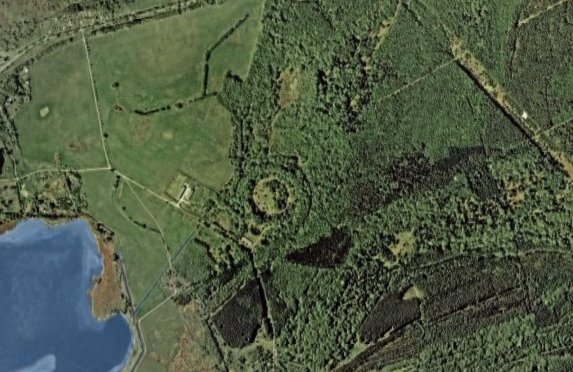
A Google Earth image from the Baltic.
... something unusual caught my eye - some extraordinary circular embankments -
Constance Babington Smith
Nature's straight lines
It's not just humans that make geometric shapes in the landscape. Nature can do that also. Under the right circumstances, the wind can leave straight lines in the cryosphere. Not quite as straight as lines drawn with a ruler, but straight enough.
The straightest and longest line I know of in the cryosphere is the one formed as the the main ice pack shears and slides along the north coast of Greenland towards Fram Strait. The bay ice is 'glued' to the coast and is relatively immobile. When the ice pressure builds up forces in shear, something has to give. The result is a shear line - made straighter as a vast mass of ice slides eastwards past the bay ice and the edges grind together.
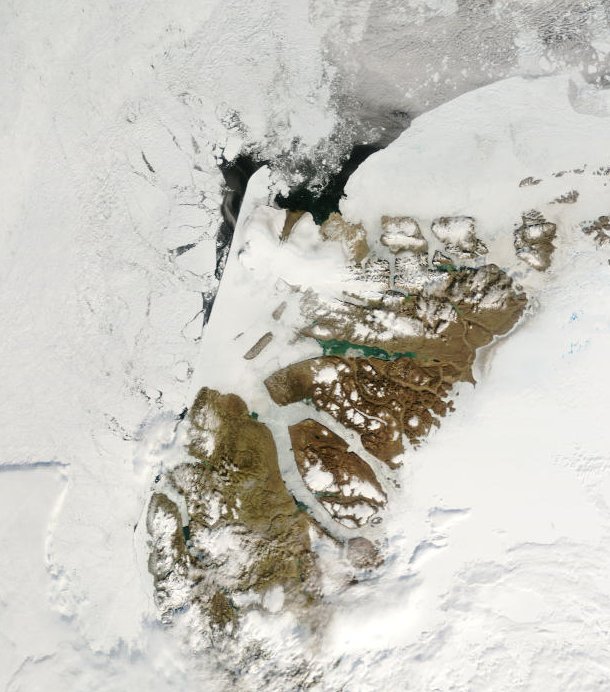
NE Greenland - MODIS Rapidfire image, cropped.
It occurs to me that seismologists might do well to have a close look at the Arctic while some ice sheets remain. To me, ice sliding past ice under great pressures is a natural model of one aspect of plate tectonics: stick and slip. So there you have it: we might learn more about the mechanisms behind earthquakes if a few geologists don't mind putting up with a slight chill - as they battle to stay upright in an Arctic gale.
The cryosphere's tumbleweeds
Did you ever see tumbleweeds blowing around in a cowboy movie? Snow can move that way. Under the right conditions, a steady wind can roll snow along the ground, building balls or rolls of snow and leaving a trail behind. A wind that is strong enough and steady enough can move any object in a straight line for many kilometers. Ask any sailor. Or go look at some sliding rocks.
If you see a dark trail in a snowscape with a white blob at one end, you could be looking at a snow roller.
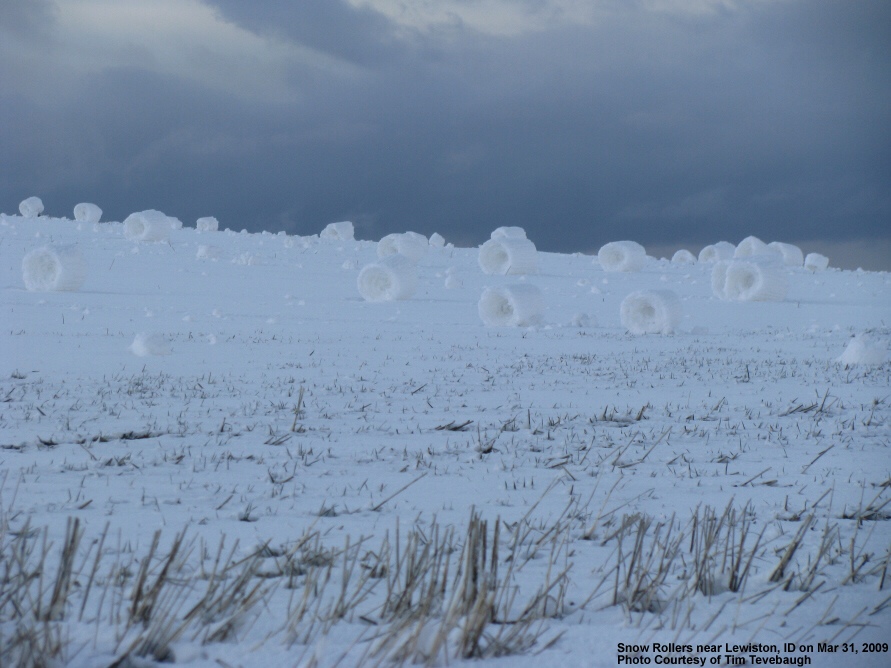
Snow rollers on the Camas Prairie
Snow rollers resemble straw rolls. Whatever we humans invent, it seems that nature owns the patent rights from way back.
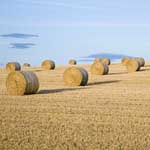
Straw rolls in a field
Wind shadows
Dark lines in a snowscape are most likely to be wind shadows. Turbulent flow in a fluid stream beyond an obstruction can cause a scouring effect in river beds. Bridge builders have long known about this. When snow is carried in the wind it will tend to build up on one side of an obstruction and leave a bare patch downwind. That small fact is widely known. Less widely known is that the same pattern can arise if a wind blows over loose snow. Snow carried across the surface will pile up in front of an obstruction. Behind the obstruction the scouring effect will cause snow to be carried away by the wind. Here are some pictures of wind shadows in the cryosphere.
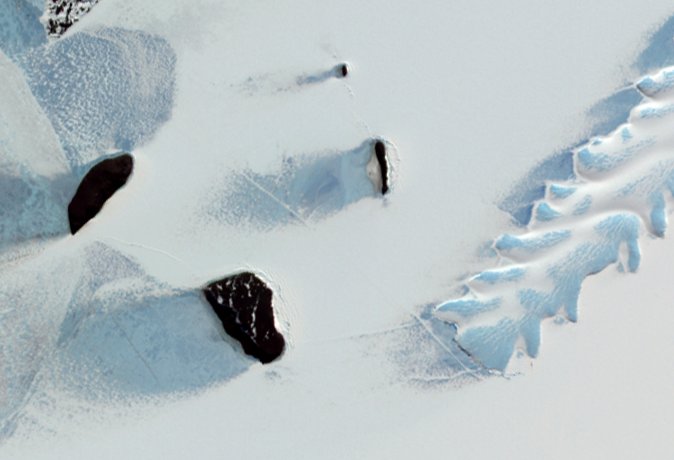
Wind shadows near Erebus ice tongue
The two diagonal lines running from left and down to the right are not cracks. They are part of a man-made ice road from McMurdo Base.
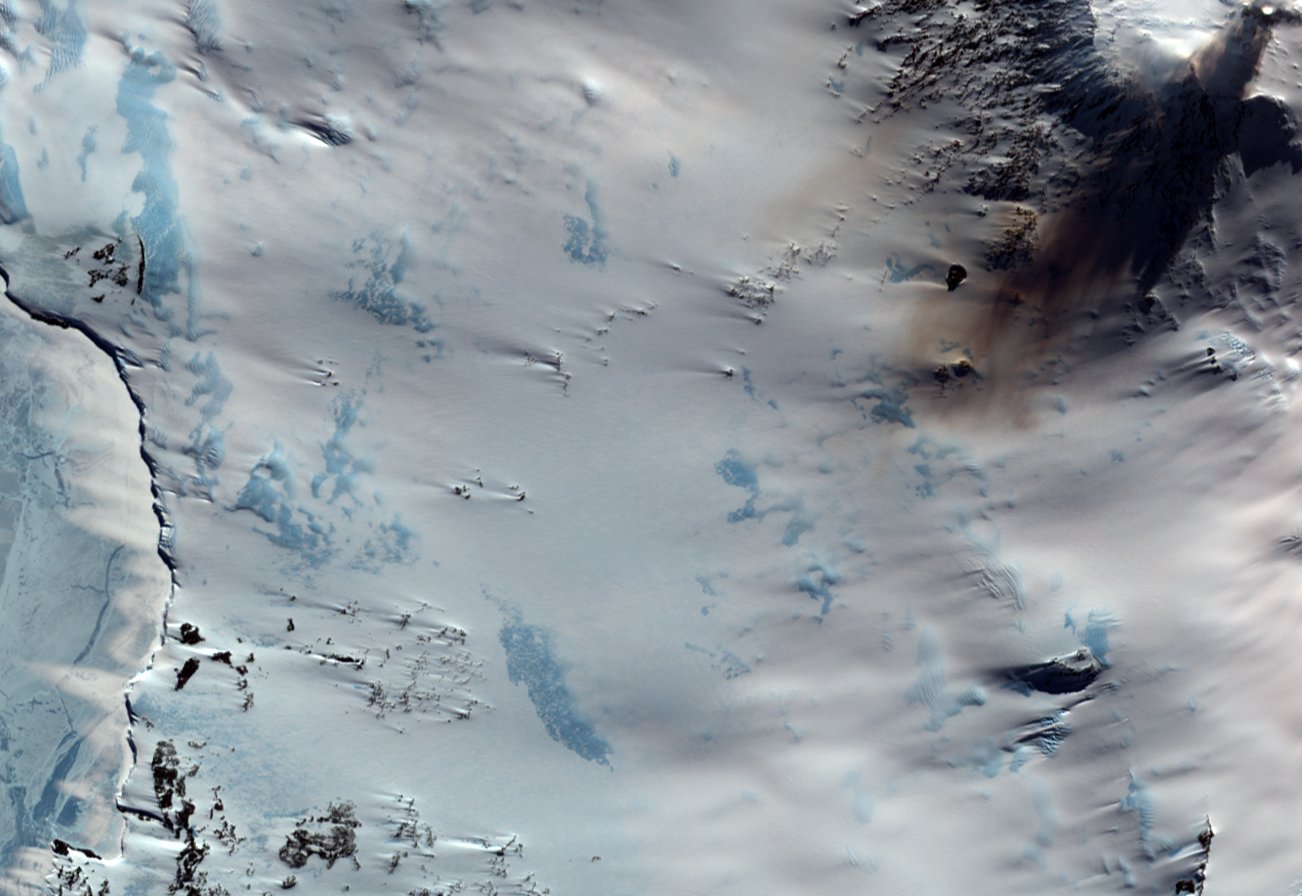
Nunataks near Mount Erebus
Some of the smaller clusters of nunataks resemble snow covered woods and copses. At top right, a plume from the volcano darkens the landscape. At left a different kind of wind shadow effect can be seen. Wind-blown snow drops onto the sea ice in long plumes and falls into banks in the shelter of cliffs.
Ice extent proxies
If you want to know the minimum ice extent in an area and have no records, the ice itself can stand as a good proxy for previous ice extent. In areas where ice is relatively thin, icebegs can barge their way through and leave trails of open water which re-freeze. However, where the ice is very thick, as in some bays which have not melted out for some years, and as in much of Antarctica's shorefast sea ice, icebergs are held immobile.
Between the icebergs and all the way back to the glacier or ice tongue, expanses of ice appear to be totally flat in satellite images. By careful examination you can - so to speak - 'pick your way' between the bergs and find the previous maximum extent of open water in the area.
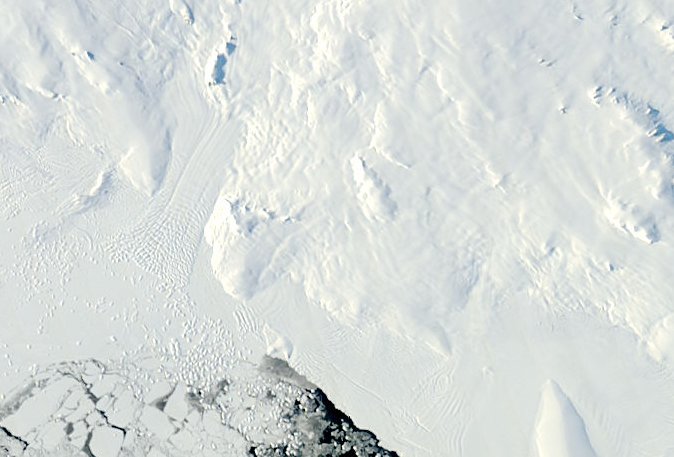
An ice tongue in Antarctica calves huge bergs
To the right of the main stream of bergs can be seen ice islands trapped in the sheet of ice. This suggests that the ice here has melted back to the coast in very recent times. The bergs themselves serve as a proxy for ice tongue strength. Note how many icebergs there are here and how few ice islands. This suggests that the glacier could rapidly calve back to its grounding line in the absence of sea ice.
One last point. Long ago, long before the age of steam even, people figured out that the highlights and shadows on the moon were craters rather than mounds. It was just a matter of observing the shadows cast by the sun at different angles. In the above image, the shadow of the peak near the top confirms what the eye sees: the line along the glacier is recessed and the 'bits' in the sheet ice are raised.
Right. I'm off now to pore over Google Earth in the hope of discovering the lost city of Atlantis / Shangri La / Erewhon / Nod Nol.
---------------------------------------------------------------------------------
Image sources
http://www.wrh.noaa.gov/otx/photo_gallery/snow_rollers.php
http://www.scri.ac.uk/research/climatechange/current/mitigation
http://rapidfire.sci.gsfc.nasa.gov/
Related
http://en.wikipedia.org/wiki/V2
If you enjoyed this article, you may also enjoy some of my other articles, blogs and light-hearted moments in the chatter_box.





Comments